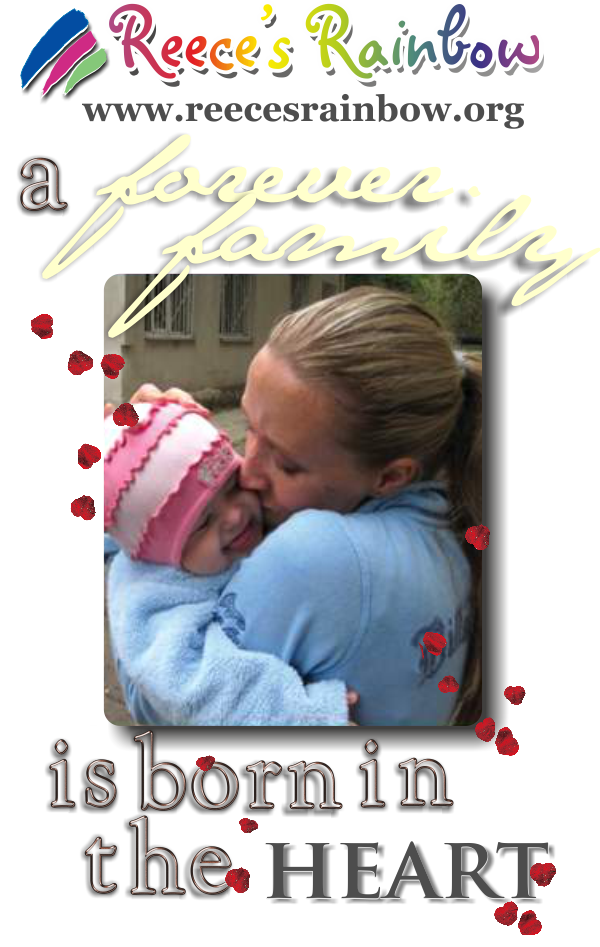I got an IEP progress report yesterday showing how Katie is doing in the goals we have set for her this year. She ranged anywhere from 0% mastery to 67% mastery. It is at once a sobering and yet a joyful reminder of how she has/hasn’t progressed. How can that be? When I look at everything she went through early on in her life and what she has had to catch up to, I am grateful for even the smallest progress. The fact is my daughter at 3 1/2 cannot do things that I took for granted with my son. Make no mistake about it---I do not dwell on what Katie can and cannot do, because I know Katie is trying the best that she can. It simply takes her longer to master a task than other children. Her normal is not anyone else’s normal. That is a fact plain and simple. Now this doesn’t mean that I don’t want her potty trained, feeding herself 100 % of the time, learning and saying her A, B,C’s, and colors among many other things. I do. I want her to reach the goals that we set for her at school and at home: school goals include paying attention to an activity for 10 minutes at the time, playing with toys with her peers during free time, and looking at a picture book and correctly picking out the requested item among some other goals. For the record she made a big, fat zero on the picking out items goal. Now I am going to ramp up what we do at home in that area and figure out what we can do to improve on that goal. I love watching her get into her toys and pull them out to play with the music toys and the balls. She didn’t do this for the first 3 years of her life. She showed no interest whatsoever in the toys in her toy box. So when I have to go around the living room picking up toys, I am grateful because she is showing progress of being curious, of taking interest in what is around her when she wasn’t before. Since we are potty training and I do feel like it is going good some days, I have to laugh when she takes her toilet and completely tears it apart. I take it that those are the days when she is not interested in the potty!
So what is an IEP? IEP stands for Individualized Education Programs. A good place to get the information in a broken down guide is at the US Dept of Education or at Wrightslaw. The IEP brings the parents, teachers, related service personnel (such as therapist) and school administration together to help improve the educational results for children with disabilities. Everyone gets together to look at the child’s needs and a plan is written out to assist in teaching and helping the child to learn. Goals are usually written for a year at the time and can address social, academic, behavioral and physical needs. You must have a way to measure the goals to see if the child has achieved the set goal. This article from Wrightslaw gives you extra tips on how to have a better IEP meeting. It was written by a lawyer who has an autistic daughter. This website has a printable toolkit to help assist you in writing IEP goals for children with Down syndrome. As you are starting to transition your child from an Early Intervention program into the school system, you will want to know about IEP’s as they will be a part of your life if you plan to educate your child in your local school system.
Speaking of school systems, I am so proud to report that Katie is doing wonderful in her full inclusion classroom at her private preschool that she attends 2 days a week. She is in the 2 1/2 year old class, making her a full year old than her peers, but developmentally it is the right fit for her. She has fit right in with the other children and she can model what her peers are doing. She enjoys going to school each day and I couldn’t be happier with the mixed schooling that we have her in right now. I was so worried about how she would do, would they find that she was too much trouble to have in the classroom since she had no attention span when she first started, would she be able to keep up with what her other classmates are doing, would the teachers feel that they were being burdened by having her in the class? I am so thankful that they were willing to try what they had not done before and that the entire school from the administrator on down would give my Katie a chance. I don’t know where our future will be concerning Inclusion, but I will approach that if we feel it is appropriate for Katie in the school system. I recently read an article my friend did for her teaching class about inclusion of children with Down syndrome. There really are so many benefits to it for the student and their peers. .
Inclusion is educating the student with disabilities with regular students for the majority of the day. Mainstreaming is when the student visits a regular classroom for specific subjects, usually non-academic. Inclusion shows that friendships develop and nondisabled students are more appreciative of the differences with students who have disabilities and they can find true acceptance of diversity which carries on into their home and community. I like the idea of inclusion in every part of my Katie’s life and as we go forward in the school system, we will assess her needs and determine what is best for her then. I am thankful that we have had a chance to see it action this year. Katie is like everyone else in that she wants to learn and wants to do what her peers are doing. Inclusion has been happening here at home for the last three years. Katie does everything we do-- we exclude her from nothing in our everyday lives. Today I went to the store and chased her around the store and got absolutely nothing done! Sometimes I need seclusion!
Just an fyi on how Katie is doing in the Infantile Spasm (West Syndrome) department. For those who don’t know, Infantile Spasms are a form of seizures. Katie started having them at 8 months of age and had them nonstop for 3 months. They can be neurologically devastating. We saw all of Katie’s development stop. Basically my daughter’s brainwaves were chaotic all of those months. Over half of all children with IS go on to develop other seizures. After treatment with high doses of steroids, Katie went into remission. She has been in remission since then. Even to this day when I think of what she went through, I am brought to tears because I lost my daughter during that time. I would try to research IS and would have to stop because I couldn’t see past all the negativity in the diagnosis. (Sort of how many people first think when they hear Ds as a diagnosis.) I felt so helpless during that time. Luckily for Katie, she is doing incredibly well now. Her doctor tells us that we are the only family he has treated that has continued to show a remission from these seizures. So for that I am extremely thankful.
That is why I said at the beginning of my post that Katie’s IEP is sobering yet joyful. Sobering because I am reminded that my daughter faced so many challenges starting out. Sobering because we continue to face challenges of a different source now. Joyful because for everything she went through, she has come out the other side intact and thriving. I don’t know Katie’s future, mine or anyone else’s for that matter. If I make it to the end of another day, I am happy that God allowed me to be here to see it. To see her. No doubt in my mind that Katie lives a joyful life—not to mention how much joy she brings to those in her life. When it is all said and done, will it really matter that my daughter learned things much later than others? Maybe, maybe not, but I can only be thankful for the joy she brings me right now and for the anticipated joy that she will continue to bring to me.















No comments:
Post a Comment